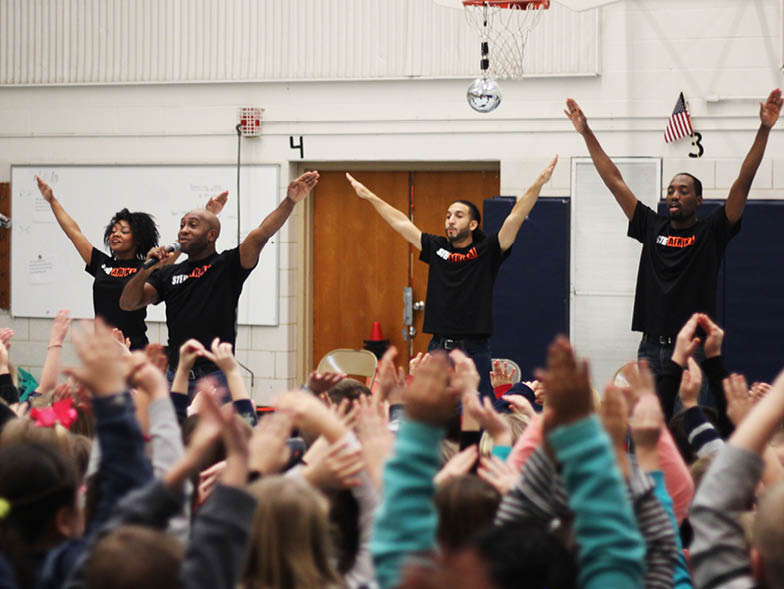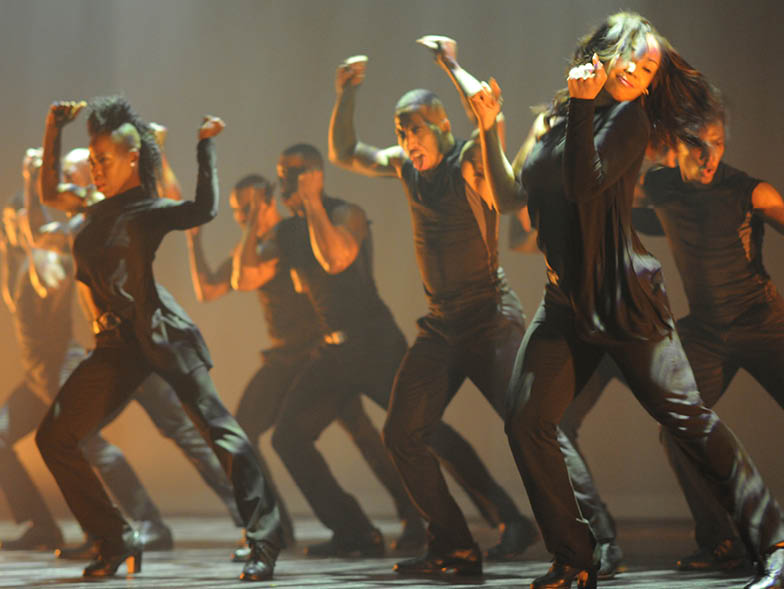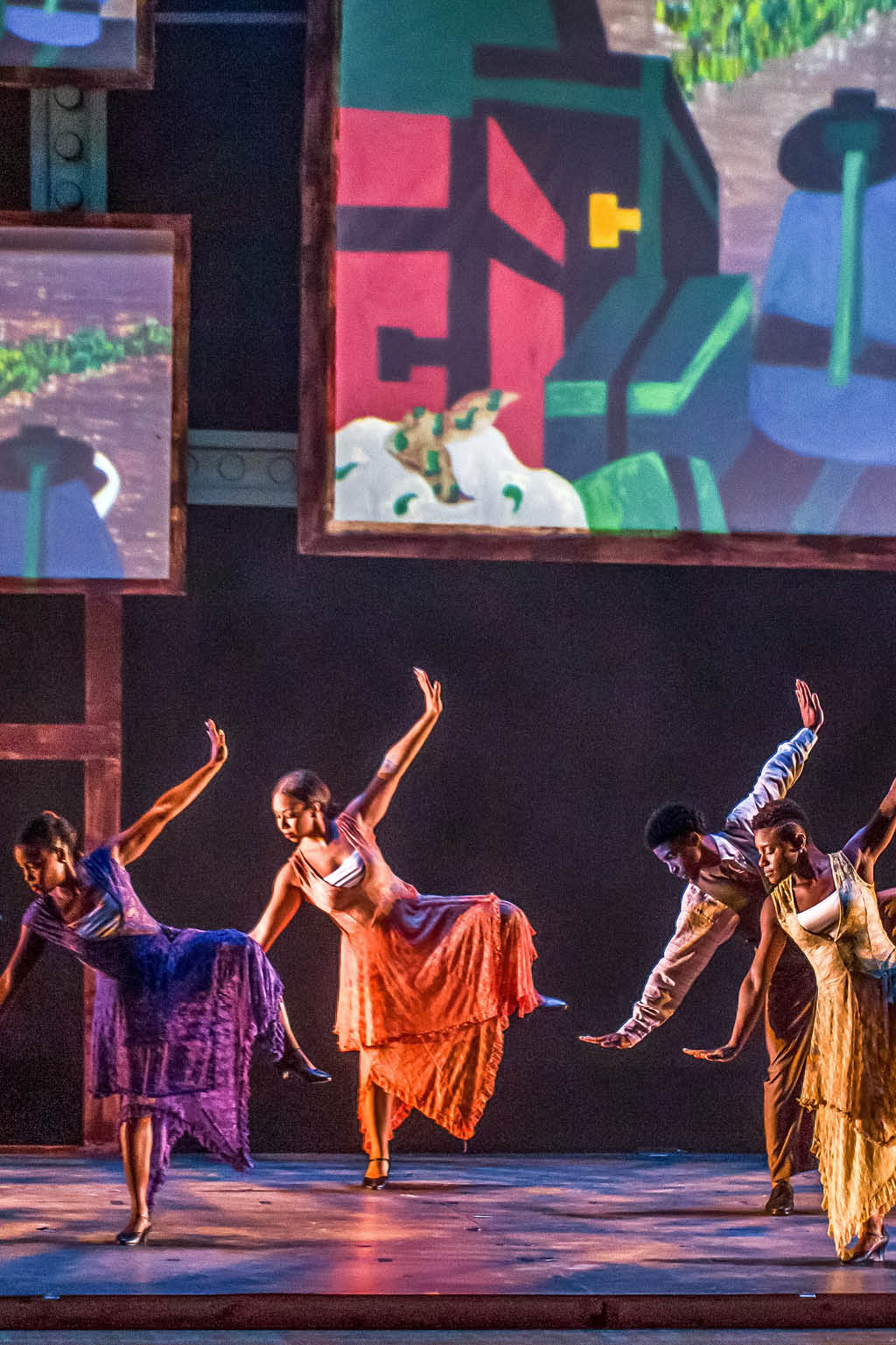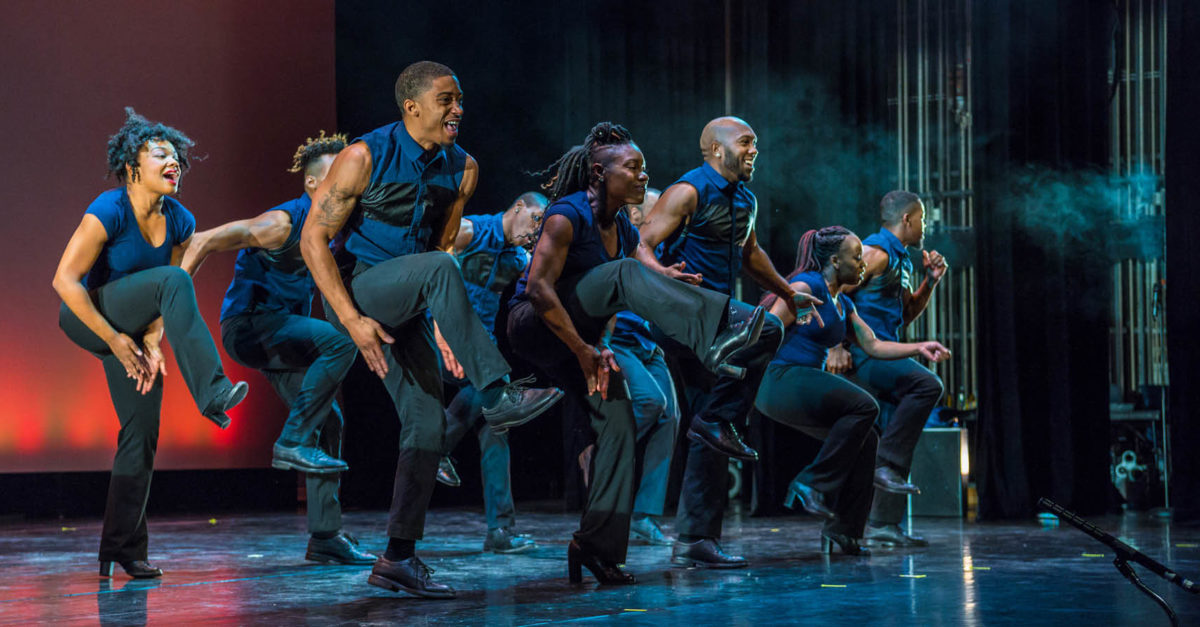Step Afrika!: Journey of A Thousand Steps
The brainchild of C. Brian Williams, Step Afrika! is the first professional dance company in the world dedicated to stepping, a percussive dance form that uses steps and hand claps to produce rhythms and sounds. Before Step Afrika!, stepping could only be found on college campuses as a part of African American Greek life. Today, the company uses the art form as an educational tool to encourage young people to pursue a college education and performs to great acclaim worldwide.
What is your personal background in stepping?
I am originally from Houston, Texas, but I am a product of historically black colleges and universities. Both my parents went to black colleges and universities, my grandparents on both sides did, and even my great-grandparents are graduates of historically black colleges and universities in America. I went to Howard University in Washington, DC, and it was there that I was first introduced to the tradition of stepping. I saw it on campus performed by members of different sororities and fraternities on the yard, and I was fascinated the first time I saw it.
Did stepping only exist on college campuses? Was it not something taught to children?
That is what is so special about the tradition of stepping. College kids do a lot of cool things, but creating new dance forms that become traditions is not usually one of them. Stepping, however, is the exception. This is an art form truly born out of the African American fraternity and sorority system. Prior to Spike Lee’s 1988 film School Daze, which introduced stepping to the mainstream, the only way to see or access the art form was through the fraternity and sorority systems on college campuses.
Can you pinpoint which college started it?
A good friend of mine, Dr. Elizabeth Fine, wrote a book called Soulstepping. It was one of the first scholarly books published on the tradition of stepping, but it is inconclusive. Sadly, we don’t know which fraternity or sorority first started stepping on what campus and at what period of time, but the book does talk about the first hints of stepping seen on the Howard University campus in the early 1900s.
Can you give a brief history of the evolution of black fraternities and sororities and stepping?
Alpha Phi Alpha Fraternity, Incorporated was created in 1906 at Cornell University, and it was the beginning of black Greek life. The other eight developed from there, mostly between 1906 and 1922 (with the last one in 1963). Five of these fraternities and sororities, which are part of what is now called the Divine 9, were created on Howard University’s campus. It was like an awakening of African American cultural life. They didn’t create the fraternities to step. They created the fraternities for brotherhood, community service, and community uplift, and stepping was an artistic byproduct of African American Greek life.

So stepping didn’t originate in Africa?
Because stepping is so under-researched, even some steppers will say that stepping comes from Africa. But what they are really saying is that African Americans owe a lot to the continent of Africa in terms of culture, food, and rhythm. There isn’t concrete evidence that stepping made the journey to the Americas during slavery. So stepping is really an African response to American life.
We found there are some art forms in Africa that have a striking resemblance to stepping, like the South African gumboot dance.The gumboot dance is a contemporary dance form, created over one hundred years ago by men who worked in the mines of South Africa. They were issued Wellingtons, rubber shoes that protect your feet, and they’d make music with them. That happened around the late 1800s or early 1900s, around the same time that African Americans were creating the fraternities and sororities here in the United States and beginning to step. It’s fascinating that these two art forms grew up with each other through African people in different parts of the world, and yet their response is similar.
What inspired you to move to Africa?
My first job was a fellowship to go live and work in southern Africa, where I taught small business skills at a community center. And that is where I first became exposed to the South African gumboot dance. I started doing mini exchanges with my students:
I would teach them the stepping that I learned at our university, and they would teach me their steps of the gumboot dance. I became very excited by the power of the arts to bring different people together. It was like a light went on. I knew I needed to connect the two art forms. And that is how Step Afrika!, as an idea, was born.
How old were you when you founded Step Afrika!?
I was twenty-five years old, though I had the idea when I was twenty-one.

When you formed this company, how did you find the dancers? How did this first season begin?
The very first artists of Step Afrika! were my fraternity brothers from Howard University. I always give tremendous credit to my brothers at Alpha Phi Alpha. When I had the idea, I came to them and said, “Look, guys, we’re going to take stepping to the continent of Africa. Who wants to go?” These weren’t dance majors—they were political science majors, business majors, and biology majors who also learned this art form of stepping in their spare time and wanted to share it.
How did Step Afrika! become a tangible thing?
I was working in Washington, DC, from about 1990 to 1994, when my company sent me to South Africa on assignment. I ended up meeting some dancers at the Soweto Theatre, a wonderful dance company based in South Africa. I told them my idea for Step Afrika!, and they were completely engaged and excited, and they wanted to hold a festival in Soweto, a town on the outskirts of Johannesburg.
How did Step Afrika! transition from a festival in Soweto to a dance company in DC?
It took some years. We thought we’d do the festival in Soweto as a one-time thing, but it was so amazing and everyone was so happy that we had to do it again. It was all volunteers at the time. We had to raise funds and figure out how to cover our expenses. After the third time, we started thinking there was more to this than just a festival and wanted to start teaching stepping to children in the States. We also wanted to use stepping as an educational and motivational tool. We held our first workshop in South Carolina after a magazine article came out about Step Afrika! in 1996.
At what point did you transition Step Afrika! into a performing company?
From 1997 to 1998, we started exploring the performance side of things and putting shows together. We brought in girls to step with us, which was unheard of because guys and girls did not step together historically. That helped us evolve from a ten-minute show to a twenty-minute show. By 2000, we had a thirty-minute show. But the Kennedy Center wanted an hour-long performance, so we raised funds to bring the Soweto Dance Theatre out to Washington, DC, to perform with us. We had eight sold-out shows at the Kennedy Center, and that was the beginning of our recognition as a professional dance company.
Who was part of your first company? Did you hold auditions to fill spots?
It was all fraternity brothers at first, and later the women from the sorority joined the company.

Talk about the programs you do with the students:
Whenever we teach or talk about the tradition of stepping, we always want to emphasize its origins. Stepping is a highly energetic, percussive, rhythmic art form created by African American college students who became members of African American fraternities. That is our way of acknowledging its roots on college campuses, and it’s also a reason why our programs always direct children toward the possibilities of college. We want to introduce the idea of college at a young age and plant that idea as an option for them. Summer Steps with Step Afrika! is our flagship summer education program.
We started that in 2006. The camp is subsidized by donors in order to lower tuition fees, and we also provide twenty needs-based scholarships to students who cannot afford to attend.
Whenever we are on tour, we are also doing community outreach. All the artists are teachers as well, and we really stress that in the artists that we hire. They are great on stage, but they are equally as great in the classroom.
Do you hold auditions now?
We started holding auditions around 2004. There are no original members still in the company, myself included. We all got old. One question I ask of auditioning dancers is, “Do you really love the stage? Because if you do, this will be an amazing place for you.” When you are a performer, you have to consistently put yourself out there night after night. We are getting ready to see a generational shift in the company when we will have more young artists than ever before. Figuring out how to survive year to year and replace those dancers that you thought were indispensable is a great creative challenge.
What are some of the company’s biggest accomplishments?
We stepped in the White House in 2016 with President Barack Obama and the First Lady. I have always wanted to step in the East Wing and make those chandeliers shake. Around that time, we were also asked to create an exhibit for the National Museum of African American History and Culture. I can now say that Step Afrika! is performing and teaching stepping every four minutes of the day because of this interactive exhibit in the museum. Sharing this tradition with different people and cultures at all is a dream come true for me.
For more info, visit www.stepafrika.org.























